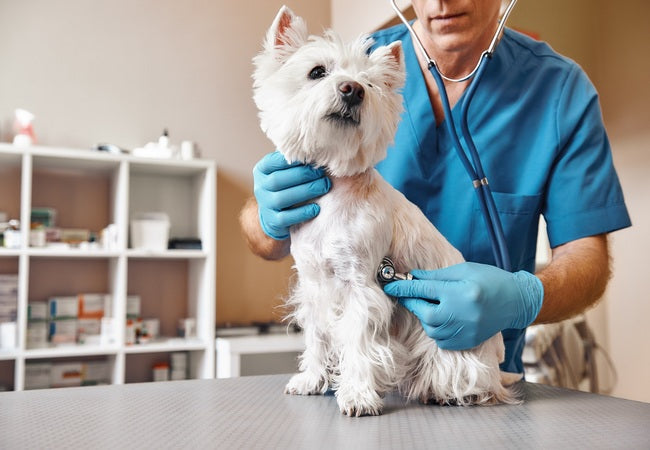Canine Splenic Torsion Diagnosis Vet Guide: in 2025 Treatment & Recovery 🐶💫

In this article
Canine Splenic Torsion Diagnosis Vet Guide: in 2025 Treatment & Recovery 🐶💫
By Dr. Duncan Houston BVSc
Welcome, loving pet parents! I’m Dr Duncan Houston BVSc. In this 2025 guide, we deeply explore splenic torsion—when a dog’s spleen twists on its vascular pedicle, often in large, deep-chested breeds. This emergency can lead to shock and internal bleeding, and requires immediate veterinary attention. We’ll guide you through key steps: recognition, diagnosis, emergency surgery, aftercare, recovery, and prevention, with support from Ask A Vet, every step of the way ❤️.
1. What Is Splenic Torsion?
Splenic torsion happens when the spleen rotates on its vascular pedicle, cutting off venous outflow while arterial inflow continues—causing dangerous congestion, enlargement, and often compromise of surrounding organs. It can be standalone or associated with gastric dilatation–volvulus (GDV).
2. Why Dogs Are Vulnerable
- Deep-chested breeds (Great Danes, German Shepherds, Standard Poodles, English Bulldogs) are most affected.
- Often occurs acutely—sudden collapse—or chronically—vague symptoms—making diagnosis challenging.
- May develop from intense rolling, exercise, or after episodes of GDV.
3. Recognizing the Signs 🩺
Signs vary based on the acuteness:
- Acute signs: Sudden collapse, severe abdominal pain, pale gums, rapid heart rate, vomiting, weakness, distended belly.
- Chronic signs: Intermittent lethargy, loss of appetite, weight loss, port‑wine–colored urine (hemoglobinuria), mild vomiting.
4. Diagnostic Approach 🔍
- History & physical: Note breed, behavior, abdominal pain, palpation of enlarged spleen.
- Bloodwork: CBC, biochemistry, urinalysis—look for anemia, abnormal clotting, hemoglobinuria.
- Imaging: X‑rays may reveal abnormal spleen positioning or mass effect; abdominal ultrasound with Doppler confirms enlarged spleen and diminished blood flow.
- Exploratory surgery: Definitive diagnosis often made during surgical exploration.
5. Emergency Treatment 🏥
- Stabilization: Aggressive IV fluids, possibly blood transfusions for shock.
- Surgery: Splenectomy is essential. In GDV-related cases, concurrent gastropexy is critical.
- Surgical tips: Ligate the entire splenic pedicle before untwisting to prevent embolic release; careful handling needed due to friable tissue near the pancreas.
- Post-op care: Monitor for arrhythmias, bleeding, infection, gastritis, pancreatitis. Hospitalize for 48–72 hours ⭐.
6. Prognosis & Complications
- Excellent recovery if surgery is timely and no severe complications.
- Risks include anemia, arrhythmias, pancreatitis, infection, and ongoing GDV.
- Mortality risks include intraoperative hemorrhage, sepsis, respiratory issues, higher if chronic or necrotic.
- Follow-up imaging and exams recommended, particularly if GDV concurrent.
7. Recovery & Aftercare 🏡
- Restrict activity for 2 weeks; avoid rough play
- Use e‑collar and monitor incision daily for signs of infection
- Manage pain with vet-prescribed NSAIDs or opioids
- Gradually reintroduce diet; watch for vomiting or digestive upset
- Monitor hydration and overall wellbeing
- Attend follow-up appointments for vitals, imaging, and GDV prevention checks
8. Prevention Strategies 🛡️
- Large deep-chested dogs benefit from prophylactic gastropexy during splenectomy or as proactive GDV prevention.
- Avoid extreme exercise after eating or rolling in large breeds
- Stay alert to warning signs—prompt veterinary eval may save lives
9. How to Ask A Vet, Support You
- Ask A Vet: 24/7 veterinary guidance for spotting symptoms, deciding on tests, and managing postoperative complications.
10. Emotional & Community Support ❤️
Facing an emergency like splenic torsion can be traumatic. Ask A Vet offers emotional reassurance and care coordination.ease daily recovery with soothing tools and instructions. Patient forums connect you with others who've navigated similar emergencies—you’re not alone 🌟.
11. Final Thoughts
Splenic torsion is rare—but life-threatening in deep-chested dogs. Rapid recognition of symptoms, stabilization, and splenectomy (plus gastropexy when needed) can result in strong recoveries. Stay alert to warning signs, pursue timely veterinary care, and lean on Ask A Vet for smooth, supported recovery. With the right intervention, your dog can return to a happy, healthy life 🐾✨.
— Dr Duncan Houston BVSc
For ongoing support, visit AskAVet.com and download the Ask A Vet app today!






